 Richard Laverack writes about the connections between the Spanish property development lobby and the shocking systemic corruption issues in Spain. There are many similarities between the Spanish and the Australian banking and property development lobbies and their relationships with government. The Ballieu Government's push for Westernport and a new "bubble" in Webb dock is based on the same philosophy of friendly fascism. So was the preceding Labor Government's. This article gives a short history of fascism and corruption in Spain before describing the current financial problems and their relationship with property and finance.
Richard Laverack writes about the connections between the Spanish property development lobby and the shocking systemic corruption issues in Spain. There are many similarities between the Spanish and the Australian banking and property development lobbies and their relationships with government. The Ballieu Government's push for Westernport and a new "bubble" in Webb dock is based on the same philosophy of friendly fascism. So was the preceding Labor Government's. This article gives a short history of fascism and corruption in Spain before describing the current financial problems and their relationship with property and finance.
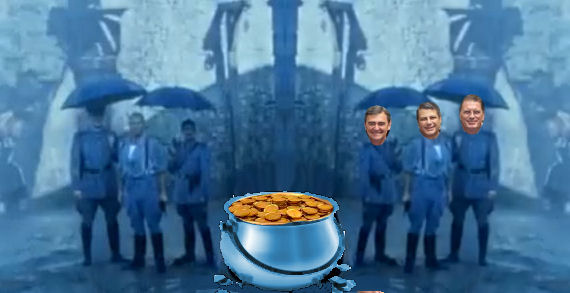
Spain's newly re-instated monarchy
Spain is attracting a great deal of news coverage for all the right reasons lately, but the Spanish people have suffered enough.
It has a recently re-instated monarchy. On 22 November 1975, two days after fascist dictator General Francisco Franco's death, the Bourbon heir Juan Carlos was designated King according to the law of succession promulgated by Franco. In 1969, when Franco named Juan Carlos as the next head of state, Spain had had no monarch for 38 years.
It has a King who, as head of the Spanish “branch” of the World Wildlife Fund, thinks it appropriate to holiday in Botswana shooting elephants.
The king’s daughter, la Infanta Christina Federica Victoria Antonia, is married to Inaki Undangarin, Duke of Palma de Mallorca, who is currently facing charges of embezzlement of millions of euros.
Spain's justice system in tatters
It has a justice system in tatters. The Supreme Court suspended fellow Judge Baltasar Garzon from practicing for 11 years after investigating so called (7) irregularities in Garzon’s investigation into wide scale corruption within the conservative Partido Popular. Up to 70 senior members were being investigated.
Supreme Court Chief Justice Carlos Dívar on Thursday resigned under pressure for charging 32 long weekend trips to Marbella and other Spanish destinations to the judiciary. (1)
Spain and the Oil Wars, News Ltd and ex-Spanish PM, Aznar
Carlos Divar was appointed by Jose Louis Aznar, ex- prime minister of Spain from 1996 – 2004. Aznar, now a very prominent member of Rupert Murdoch’s News Ltd board, was a founder member of the “coalition of the willing” leading the “oil wars”, even before John Howard. The only natural resources Spain has is a small amount of coal in Asturia.
Aznar was “scholared” in politics by Manuel Fraga. From 1951, Fraga served in various posts in the Franco regime, including minister for information and tourism. He took part in the Transition (restoration of the Monarchy), and formed the conservative People's Alliance (AP), the precursor to the Popular Party (PP).
Fraga was known as a heavy-handed politician. The drastic measures he took as chief of state security during the first days of the Spanish transition to democracy deeply damaged his popularity. The phrase "¡La calle es mía!" ("The streets are mine!") was attributed to him. This phrase was his answer to complaints of police repression of street protests. He claimed that the streets did not belong to "people" but to the State.
Partido Popular (PP) - The Peoples' Party
Appointing Aznar as head of the Partido Popular (PP) in 1989, Fraga duly became President of the PP. Fraga was known as a “social liberal”. He relaxed censorship laws (despite the severe lobbying of the Catholic Church) and finished his political career as Franco did, in office. He died in January 2012 serving as Spain’s ambassador to the European Union.
The “lineage” is further continued into the present day when Aznar’s “puppet”, Manuel Rajoy became head of the PP in 2004 after Aznar was dumped. (Rajoy is currently prime minister). Aznars wife is Mayor of Madrid, Spain’s largest city and the seat of government.
Fascism and economic crashes: the 1930s and 2012
Nothing has yet been mentioned of the fascist dictatorship, even less is currently spoken about the Second Spanish Republic from 1931 -1933, but if a cursory glance is cast, striking similarities can be seen to current events and recurring themes played out, separated by time but very relevant to the history of Spain.
Spain’s economy collapsed after the Wall St crash in 1930. General Primo’s 12 year dictatorship ended when the monarchy and people (who hated his brutal era) lost confidence in the government and elections were held that produced a republican and very anti-catholic majority. The unification of 1851 under the Bourbon (French) monarchy was being undone as King Alphonso XIII abdicated and Catalunya and the Basque became independent regions.
General Franco earned his stripes and became known as “the butcher of Asturias” after his brutal suppression of the miners strike in1933.
In January 1936 new elections were called which confirmed the socialist alliance as the dominant majority, but a series of assassinations and fascist/socialist violence (this is when Hitler and Mussolini were warming up), saw the invasion of Spain by Franco’s North African army. Three years later the civil war was won. General Franco, supported heavily by the catholic church, led a rebellion which systematically crushed the most progressive social and political reforms of the 20th century.
George Orwell’s Homage to Catalonia is a wonderful journey through the rag tag war.
A full length film “Living Utopia – Anarchism in Spain” (subtitled) – details this tumultuous period. It tells and shows an impoverished, hard- working intelligent, society realising the truths of brutal fascism with original footage. (6)
Franco’s victory in 1939 allowed a period of massive reprisals aided by the catholic church. Claiming neutrality gave licence to untold mass murder under the cover of world war 2, including asking Hitler’s Luftwaffe to bomb and destroy Guernica in the Basque region. A bonus was the post war escape from attention afforded many fascists of the time because Franco was now actively butchering the communist leftovers much to the approval of America and the U.K.
The random killings and brutality continued right up to Franco’s death. Many of the prison camps and detention centres remained into the nineties. It was not until the 2004 dumping of Aznar and election of socialist Zapatero that the statues of General Franco were removed from all the major plazas and intersections around Barcelona.
The Falange lives on in Spain. They recently brought a summons against Baltasar Garzon for forcing the recovery of over 100,000 bodies which still remain in mass graves throughout the country. Manuel Rajoy has stopped any federal assistance to the searches. There is a group called the Commission of Historic Memory Recovery (8) which flounders to bring about what is granted in Australia on an “as needs” basis, a human right proudly supported by the government, - to re associate families with their dead/missing relatives. They are not even buried in a foreign country for God’s sake. (4)
The Catholic Church offers no support, preferring to denigrate homosexuality and force the government to reverse abortion rights, access to the morning after pill, and gay marriage. (5) Their [Rajoy’s Peoples Party government] crackdown on public gatherings makes further fascist tendencies obvious.
Last week, Interior Minister Jorge Fernández gave more details: Peaceful resistance will be deemed a form of illegal undermining of authority, punishable with one to three years in jail; the punishment for civil disobedience, which is currently six months to one year in jail, will be increased to two to three years. (2)
The corruption in the judiciary and government is not a one-sided affair. The first socialist government since Franco was ousted because of corruption, and Garzon had prosecuted both socialist, Basque separatist, and conservative, even handedly, as corruption in Spain is endemic, apolitical and established for many reasons.
Banking, Real-Estate and Development corruption in Spain
The banking industry is yet another industry rife with corruption as a servant of the real estate/development industry and is a prime example of the rampant corruption which extends into every one of the three levels of Spanish government – Federal, Regional (autonomous) and local. All Spanish bank board approvals are political appointments, so builders, teachers, cleaners earn board fees for unknowingly approving sub prime loans and not assessing budgets.
Corrupt regional governments have been allowed to finance self agrandisment projects worth hundreds of billions of dollars with help from the E.U. The country was 3rd world when Franco died, just starting a “package holiday” tourist boom initiated by Manuel Fraga which virtually destroyed the Mediterranean coastline. Jose Louis Aznar’s neo conservative economics saw Spain BOOM. The property market rose exponentially from 1996 until in a repeat of the Wall Street crash of 1929, Wall Street crashed in 2008.
European money providing infrastructure projects such as high speed rail, air ports and solar thermal power generation, saw Spain’s investment levels reach record highs and become the center for European tourism and holiday home acquisition. During the Aznar years regional governments such as Valencia's were given carte blanche to go for the tourist dollar. An airport was built at Castellón at a cost of 200 million euros with a 300,000 euro statue of the regional governor at the airport entry. Although completed in 2010 a license to operate has not been issued and the runway has been found to be too narrow to allow international flights to turn round.
There are now 48 airports in Spain, double the number in Germany. Only 11 make a profit. (9)
1 million empty houses and unsalable real-estate
Many reports detail the 1,000,000 empty homes in Spain as well as real estate which is virtually “unsellable”. (10) Caused by the pre-2008 bubble, exactly the same as in the U.S. Iceland and more particularly, Ireland (see below - McCreevy). It has taken 4 years for the true picture to be known.
It has taken 7 months of lies to hide the true extent of Spain’s bankruptcy and finally ask the E.U. for a 100 million euros “bail out.” Meanwhile Spanish bonds have been downgraded to junk as the taxpayer further bears the brunt of sovereign debt totally caused by corruption, speculation, belief in infinite growth and a destruction of the environment.
Socially the results have been disastrous: 25% unemployment, 50% 18 – 25 year unemployment, evictions, general strikes, indefinite miner’s strike in Asturias causing flashbacks to 1933 and Franco’s repression. (This really is war and perhaps people are only just hearing about it (11))
A veil of secrecy has always been part of the Monarchic/fascist/conservative Spanish governments, which fawn on protocol and tradition, and assume an undue respect. Those that experienced the hardships and brutality of the fascist regime, and the prosperity that followed to make Spain the 4th largest economy in Europe and the 10th largest in the world, are fearful of a return to a brutal past which has never been discussed during the “transition to democracy”. The church is very powerful socially and has easy purchase within the Peoples Party.
Time and again corrupt regional governments in Marbella, Valencia, the Balearic Isles, Catalonia and Gallicia were returned in the hope they would keep the “good times rolling”. Never has the average Spaniard experienced such 'wealth creation'. It is now common daily news reporting to hear of a mayor or regional governor in court facing corruption charges, and a recent (June) El Pais article asks “Is something rotten in the state of Spain”. (12)
Rajoy Peoples Party Government ratifying illegal developments and enforcing evictions
The people voted for Rajoy and the Peoples Party knowing that election day was the anniversary of Franco’s death, and a return to “austerity” was already foreshadowed by Rajoy, who was keen to participate in the friendly fascism underway in the Goldman Sachs-ing of Europe. His answer to the 1000’s of houses built and completed illegally on land not zoned for development, is legalization and further destruction of coastal environment. His answer to whole of the building industry cast into unemployment was to enforce evictions.
Rajoy Peoples Party Government trying for another unsustainable housing bubble
His answer to unemployment and the recession, that Spain seems doomed to endure for another 10 years, is to create another bubble, this one courtesy of Las Vegas and Macau gambling multi billionaire Sheldon Adelston and “Euro Vegas” (13) with 6 casinos, thousands of hotel rooms and 18 BILLION euros worth of investment which would reportedly halve Madrid or Barcelona’s unemployment rate. This would add to the already established 30 casinos currently operating in Spain.
The Legacy
A very insightful book has recently been authored by the son of the Republic in Exile post Franco, Nicholas Sanchez-Albornoz. The book is called Prisons and Exiles and revisits Franco when the police caught up with him and his colleagues in the anti-Franco fight. The escape of Sánchez-Albornoz and his fellow prisoner Manuel Lamana from the slave labor practiced at Cuelgamuros near Madrid in 1948 was one of the legends that most damaged Franco.
The Franco regime never conceived of peaceful co-existence among Spaniards without political exile, the period from 1939 to 1942 in which, according to reports from the time, more than 100,000 people were executed. But Sanchez-Albornoz's account is not from that time. It
“begins in 1947, and I am sure there were still firing squads then because I lived through it. The executions lasted until Julián Grimau in 1962, Franco kept killing after the war.”
Sánchez-Albornoz sees the whole 40 year period as ;
“corrupt. Franco's authority rested on two elements: death and punishment, and corruption . . . .
Q./ The regime ended. But when your father returned from exile in 1976, then Interior Minister Manuel Fraga Iribarne prohibited a formal dinner in his honor. So, the regime was still there.
A./ And it is still here today. There is a de facto group, which stands for everything that fuels that dark side of a segment of the Spanish population.”
Q. How do you see this current period?
A. There is a global economic crisis led by the financial system and its abuses, which in the case of Spain has been worsened by a dreadful economic policy created by the PP in its last government (Aznar), to give free reign to the real estate sector, which resulted in a certain level of euphoria at the time. And Zapatero didn't put a stop to it; he didn't know how to burst the bubble. What is alarming in the current situation is the level of improvisation. There is a return to certain Francoist roots in society, and that is worrying. A very unpleasant Spain is surfacing. “ (14)
The remnants of fascist Spain can most easily be seen at peaceful public demonstrations. Tear gas, pepper spray and rubber bullets are a first response, now demonstrations are being made illegal. (15)
How did Spain's banks survive the 2008 crash? – Basically, endogenous corruption
The Zapatero socialist government introduced many reforms after 2004, including Zapatero's most popular one of withdrawing troops from Iraq as soon as elected, but weakly caved into a laissez-faire ignorance of the bubble. It has recently been discovered that when the execrement hit the fan, Spain’s central bank, the Bank of Spain, had, in the timeless Spanish tradition, been cooking the books.
The full extent of indebtedness was only hinted at when E.U. contagion was considered. Greece’s debt pales into insignificance when compared to the level of debt owed by the Spanish real estate sector. This comprises anything up to half the money the European Financial Stability fund has on its books, just to recapitalise the Spanish banks, whose debt is now seen as “sovereign debt”.
Both socialist and conservative governments have been shamefully responsible for dereliction of duty with the burden of debt. In true Goldman Sachs fashion, they have transferred the debt from the private to the public sector. Rajoy’s PP government has been in complete naïve denial and lied as much as it could to save face, to just kick the can down the road until after summer and the tourists have gone. The full debt is still not known and Rajoy was refusing to call for assistance as recently as the end of May. He is now openly criticized in all European media.
Only 12 months ago he oversaw the privatization of Bankia, Spain’s 4th largest bank. The share float began at 3.69 euros and is now 1 euro.
The end of year 2011 report declared a 40 million plus euro profit which, on independent audit, was revealed to be a 3.3 billion euro LOSS. Bankia has now asked for a 19 BILLION euro bail out. The total “immediate” bail out for the banking sector is said to be 62 BILLION euros, this is excluding the BoS as it would not have enough time to complete the audit until September as “too many staff would be on leave over summer”.
See also a report republished on The Automatic Earth, with a short history of the Spanish debt and how it has been handled internationally. In 2009 Charlie McCreevy, the EU’s commissioner for financial services from 2004 to 2010, who previously had been Ireland’s finance minister, has said that he knew Spain's banks were violating violating International Financial Reporting Standards, but thought it was okay for them to do so.
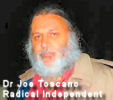 "There is not one independent in the Victorian Legislative Assembly or the Victorian Legislative Council, let alone a RADICAL INDEPENDENT. Power in a democratic society should rest in the hands of the people, not the State, corporate boardrooms or the Government of the day. Real power no longer resides in Parliament, it lies in the hands of unaccountable corporations that increasingly dictate the Legislative agenda. As we move from a period of relative abundance to scarcity as a consequence of the domination of the world economy by corporate capitalism an economic system based on the creation of ever increasing profits irrespective of the human, social and environmental costs, the ever increasing consumption of finite resources, increasing population growth and increasing greenhouse emissions as a result of human activity, we require radical changes to the way we govern ourselves, what we produce, how we produce it and how we live." - Joe Toscano
"There is not one independent in the Victorian Legislative Assembly or the Victorian Legislative Council, let alone a RADICAL INDEPENDENT. Power in a democratic society should rest in the hands of the people, not the State, corporate boardrooms or the Government of the day. Real power no longer resides in Parliament, it lies in the hands of unaccountable corporations that increasingly dictate the Legislative agenda. As we move from a period of relative abundance to scarcity as a consequence of the domination of the world economy by corporate capitalism an economic system based on the creation of ever increasing profits irrespective of the human, social and environmental costs, the ever increasing consumption of finite resources, increasing population growth and increasing greenhouse emissions as a result of human activity, we require radical changes to the way we govern ourselves, what we produce, how we produce it and how we live." - Joe Toscano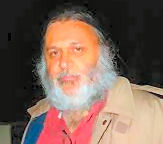

 In fortuitous collision of pique, the Greens and Labor have preferenced Radical Independent Dr Joe Toscano ahead of each other in this Melbourne by-election. Toscano has his finger on the political pulse of this nation because he has an in depth knowledge of Australian history and what we have all lost through corporatisation, privatisation, overpopulation and a corrupt public and commercial media. Hopefully many of the public will actually put Joe first. Although Your ABC Radio has shamefully refused to include Joe Toscano or other alternatives in its by-election broadcast from the Victoria Markets on Friday, a parallel but democratic gathering 8.30 to 12pm at corner of Therry and Queen Street, Victoria Markets will give publicity and information about other candidates. Please join it. As the writer of this article and with a strong acquaintance with Joe, I can make no higher recommendation than Vote 1 for Joe Toscano! See below for Joe's platform and how you can help and contact details.
In fortuitous collision of pique, the Greens and Labor have preferenced Radical Independent Dr Joe Toscano ahead of each other in this Melbourne by-election. Toscano has his finger on the political pulse of this nation because he has an in depth knowledge of Australian history and what we have all lost through corporatisation, privatisation, overpopulation and a corrupt public and commercial media. Hopefully many of the public will actually put Joe first. Although Your ABC Radio has shamefully refused to include Joe Toscano or other alternatives in its by-election broadcast from the Victoria Markets on Friday, a parallel but democratic gathering 8.30 to 12pm at corner of Therry and Queen Street, Victoria Markets will give publicity and information about other candidates. Please join it. As the writer of this article and with a strong acquaintance with Joe, I can make no higher recommendation than Vote 1 for Joe Toscano! See below for Joe's platform and how you can help and contact details.

 In order for Australia to maintain the proportion of the population aged 65 and over at present levels, enormous numbers of immigrants would be required, starting in 1998 at 200 000 per annum, rising to 4 million per annum by 2048 and to 30 million per annum by 2098. By the end of next century with these levels of immigration, our population would have reached almost one billion.
In order for Australia to maintain the proportion of the population aged 65 and over at present levels, enormous numbers of immigrants would be required, starting in 1998 at 200 000 per annum, rising to 4 million per annum by 2048 and to 30 million per annum by 2098. By the end of next century with these levels of immigration, our population would have reached almost one billion.
 I used to see all kinds of frogs in our garden as a child,
I used to see all kinds of frogs in our garden as a child,
 The Growling Grass Frog, one of the largest frog species in Australia, was previously widespread across Victoria. They are now endangered. Southern Brown Bandicoots once occurred commonly in the wider Frankston area (pre-1970s). They have rapidly declined and are now restricted to isolated remnant habitat patches. They have little chance of long term survival against the economic benefits of population growth. Without robust ecosystems, with each natural species contributing its part to the web of life, we end in a barren, artificial and sterile, wastelands. (First posted
The Growling Grass Frog, one of the largest frog species in Australia, was previously widespread across Victoria. They are now endangered. Southern Brown Bandicoots once occurred commonly in the wider Frankston area (pre-1970s). They have rapidly declined and are now restricted to isolated remnant habitat patches. They have little chance of long term survival against the economic benefits of population growth. Without robust ecosystems, with each natural species contributing its part to the web of life, we end in a barren, artificial and sterile, wastelands. (First posted

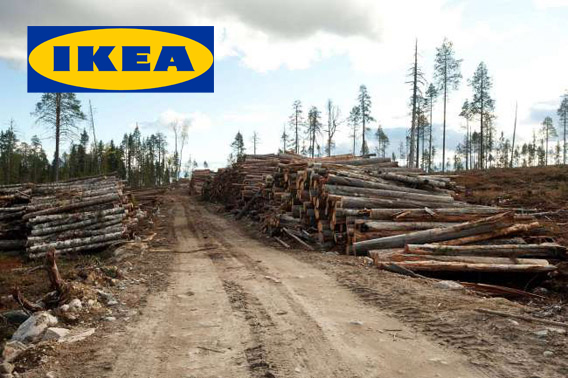
 It is not enough to whine about urban sprawl or challenge densification. People must acknowledge the root cause of urban growth and address it. They must call for the reduction of immigration.
It is not enough to whine about urban sprawl or challenge densification. People must acknowledge the root cause of urban growth and address it. They must call for the reduction of immigration. 
 CAIRNS, Australia -- International Coral Symposium. "The impacts of a warming climate on reefs is not a future event. Complex changes have already begun that could fundamentally change what reefs look like in the future." Picture: Coral growing on plastic bottle
CAIRNS, Australia -- International Coral Symposium. "The impacts of a warming climate on reefs is not a future event. Complex changes have already begun that could fundamentally change what reefs look like in the future." Picture: Coral growing on plastic bottle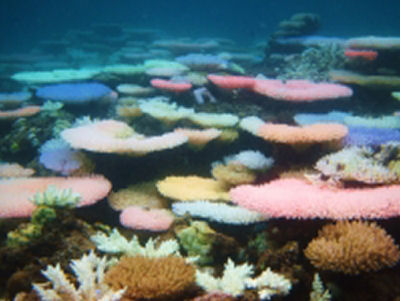 Picture: Coral faded through stress.
Picture: Coral faded through stress.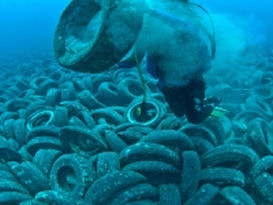 Picture: Tires litter the ocean floor.
Picture: Tires litter the ocean floor. Big Green waved a wand and presto, the "P" disappeared from IPAT.
Big Green waved a wand and presto, the "P" disappeared from IPAT.
 "Wind turbines are a compulsory backdrop for Julia Gillard when she is talking about the carbon tax but how often have you seen an image of her farewelling one of the huge coal laden boats at a Queensland port or staring into a giant open cut coal mine in the Hunter Valley? You could say that wind turbines help to mask the truth that there is a continuing growth in the usage of fossil fuels and in energy use generally." The decline in real environmental politics: despite the rising dangers of economic and population growth, an increasingly sidelined mainstream conservation movement finds false comfort in endless damage control and symbolic activity. The WW2 generation lived the community gardens, food and petrol rationing that are now goals of oil depletion awareness groups today. We were much more sustainable then. The way forward in a steady state economy would include equality and sustainability. Dr Mosley also drew a useful distinction between 'equality' and 'equal opportunity'.
"Wind turbines are a compulsory backdrop for Julia Gillard when she is talking about the carbon tax but how often have you seen an image of her farewelling one of the huge coal laden boats at a Queensland port or staring into a giant open cut coal mine in the Hunter Valley? You could say that wind turbines help to mask the truth that there is a continuing growth in the usage of fossil fuels and in energy use generally." The decline in real environmental politics: despite the rising dangers of economic and population growth, an increasingly sidelined mainstream conservation movement finds false comfort in endless damage control and symbolic activity. The WW2 generation lived the community gardens, food and petrol rationing that are now goals of oil depletion awareness groups today. We were much more sustainable then. The way forward in a steady state economy would include equality and sustainability. Dr Mosley also drew a useful distinction between 'equality' and 'equal opportunity'.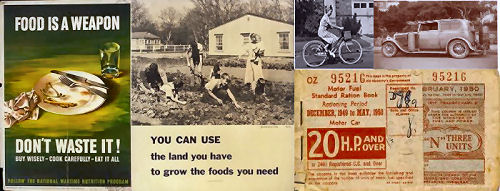


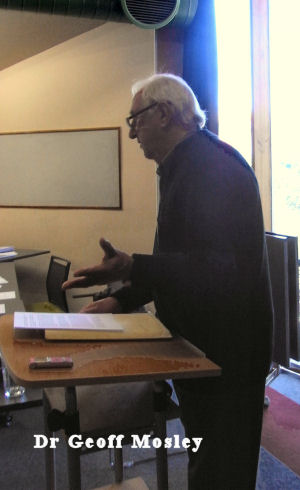
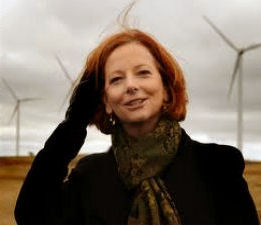

 A Michigan State University study has found that for each 1% increase in population, emissions increase by a bit more than a 1% increase in most nations. If Australia did not grow its population then by 2020 there would be almost no increase in carbon emissions. The Stable Population Party of Australia has called upon the Labor Government and the Greens to explain how their support for rapid population growth is consistent with attempts to reduce greenhouse gas emissions – or admit it’s just green-wash.
A Michigan State University study has found that for each 1% increase in population, emissions increase by a bit more than a 1% increase in most nations. If Australia did not grow its population then by 2020 there would be almost no increase in carbon emissions. The Stable Population Party of Australia has called upon the Labor Government and the Greens to explain how their support for rapid population growth is consistent with attempts to reduce greenhouse gas emissions – or admit it’s just green-wash.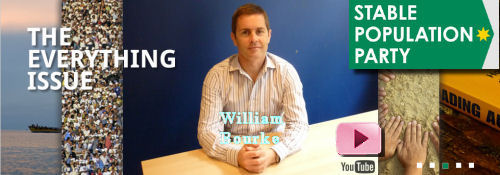





 (Updated 10 July 2012 at end of article.)Housing prices are going down and the small coterie of people who profit from unaffordable housing and land costs and the other forms of resource inflation and associated human misery have found it necessary to invent yet another force to massage unwanted population growth and high immigration in Australia. This one, the New Migration Council to advocate for a bigger Australia" calls itself an NGO rather than a think-tank or an association or a foundation, but it has multi-million dollar backing and is way out of the league of traditional advocates of community causes most people associate with NGOs. See also the latest members of the Multicultural Foundation - Julia Gillard and Tony Abbott.
(Updated 10 July 2012 at end of article.)Housing prices are going down and the small coterie of people who profit from unaffordable housing and land costs and the other forms of resource inflation and associated human misery have found it necessary to invent yet another force to massage unwanted population growth and high immigration in Australia. This one, the New Migration Council to advocate for a bigger Australia" calls itself an NGO rather than a think-tank or an association or a foundation, but it has multi-million dollar backing and is way out of the league of traditional advocates of community causes most people associate with NGOs. See also the latest members of the Multicultural Foundation - Julia Gillard and Tony Abbott.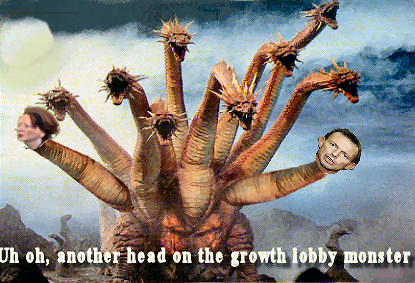

 Apologies for inconvenience. Candobetter was off-line for several hours and is now back on line - as you can see. Please send our latest articles round to your friends, particularly "Uh oh, a new head on the Growth Lobby Monster," since that was really taking off and its circulation was interrupted for several hours. Thanks for your attention.
Apologies for inconvenience. Candobetter was off-line for several hours and is now back on line - as you can see. Please send our latest articles round to your friends, particularly "Uh oh, a new head on the Growth Lobby Monster," since that was really taking off and its circulation was interrupted for several hours. Thanks for your attention. Jill Quirk (President Sustainable Population Australia (SPA) Victorian and Tasmanian Branches, and National Representative) will host Dr Geoff Mosley to speak at the AGM, this Saturday, 7/7/2012, at 2PM. Dr Mosley was Executive Director of the Australian Conservation Foundation from 1973 to 1986 and is currently the Australian Director of the
Jill Quirk (President Sustainable Population Australia (SPA) Victorian and Tasmanian Branches, and National Representative) will host Dr Geoff Mosley to speak at the AGM, this Saturday, 7/7/2012, at 2PM. Dr Mosley was Executive Director of the Australian Conservation Foundation from 1973 to 1986 and is currently the Australian Director of the 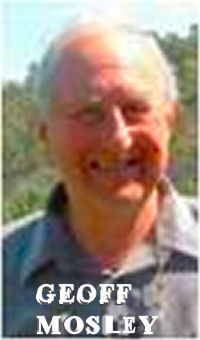


 Question. How do you create a culture of dependence? Answer: Add a strong dose of state promoted multiculturalism to a welfare state and presto, you get identity politics where group identification and cultivated victimhood combine to discourage individual responsibility. It is on Canada Day that we celebrate this buck-passing as the distinctive feature of Canadianism and seize the opportunity to sneer at Americans for making a cult of individualism and self-reliance which we equate with selfishness. Americans have rights, but we have entitlements. I am proud to live in the best country in the world. I know it is because that is what our state broadcaster told us.
Question. How do you create a culture of dependence? Answer: Add a strong dose of state promoted multiculturalism to a welfare state and presto, you get identity politics where group identification and cultivated victimhood combine to discourage individual responsibility. It is on Canada Day that we celebrate this buck-passing as the distinctive feature of Canadianism and seize the opportunity to sneer at Americans for making a cult of individualism and self-reliance which we equate with selfishness. Americans have rights, but we have entitlements. I am proud to live in the best country in the world. I know it is because that is what our state broadcaster told us.

 Canadian writer Tim Murray again exposes the logic of professional environmentalists who are not really helping the environment. Their message is all about having your ecological cake and consuming it at the same time. [Ed:Note that Tim is an environmentalist; just not faux-environmentalist.]
Canadian writer Tim Murray again exposes the logic of professional environmentalists who are not really helping the environment. Their message is all about having your ecological cake and consuming it at the same time. [Ed:Note that Tim is an environmentalist; just not faux-environmentalist.]
 Professional environmentalists and professional evangelists; how do they make their money and what do we get in return? Have they delivered for Mother Nature? Have they arrested population growth that added 33 million consumers to America in the 1990s alone? Growth that put one third of plants and animals at risk and is most probably responsible for half the loss of four million acres of farmland a year?
Professional environmentalists and professional evangelists; how do they make their money and what do we get in return? Have they delivered for Mother Nature? Have they arrested population growth that added 33 million consumers to America in the 1990s alone? Growth that put one third of plants and animals at risk and is most probably responsible for half the loss of four million acres of farmland a year? “If I was going to sucker people, it would have something to do with a religious cause! They just can't wait to give you their money--for NOTHING!!”
“If I was going to sucker people, it would have something to do with a religious cause! They just can't wait to give you their money--for NOTHING!!”

 George Monbiot wrote that Rio+20 is 283 paragraphs of fluff. If this is the best our world leaders can come up with, what is the solution to our global environmental crises?
George Monbiot wrote that Rio+20 is 283 paragraphs of fluff. If this is the best our world leaders can come up with, what is the solution to our global environmental crises?

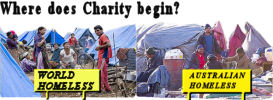 Both sides of parliament are saying that the problem is asylum seekers dying at sea as they attempt to reach Australia. Other groups claim that we are "racist" and "xenophobic" for being heartless, and that we have the capacity for an open-door approach of the Greens. There are probably millions, if not billions of impoverished, persecuted peoples who see Australia as a "rich" country and an ideal soft target for resettlement. This is despite the pressure on jobs, housing, infrastructure, food security and environmental concerns. If we need to make a deal with Malaysia, or Indonesia, we should be free to do so. The solution is to discard our alliance with the UN Refugee Convention.
Both sides of parliament are saying that the problem is asylum seekers dying at sea as they attempt to reach Australia. Other groups claim that we are "racist" and "xenophobic" for being heartless, and that we have the capacity for an open-door approach of the Greens. There are probably millions, if not billions of impoverished, persecuted peoples who see Australia as a "rich" country and an ideal soft target for resettlement. This is despite the pressure on jobs, housing, infrastructure, food security and environmental concerns. If we need to make a deal with Malaysia, or Indonesia, we should be free to do so. The solution is to discard our alliance with the UN Refugee Convention.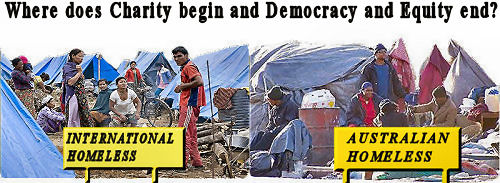
 Canada suffers from a cargo-cult mentality. To listen to Canadian federal leaders speak of their ambitions of boosting our immigration intake from its absurdly high level of a quarter million migrants a year to 1% of the country’s population level one would think that Canada is the Garden of Eden. A tropical cornucopia needing only greater input of cheap labour and capital to liberate a treasure trove of resources.
Canada suffers from a cargo-cult mentality. To listen to Canadian federal leaders speak of their ambitions of boosting our immigration intake from its absurdly high level of a quarter million migrants a year to 1% of the country’s population level one would think that Canada is the Garden of Eden. A tropical cornucopia needing only greater input of cheap labour and capital to liberate a treasure trove of resources.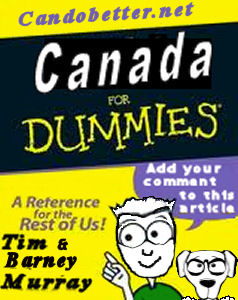

 Some Canadians have suggested evacuating 40 million Japanese citizens to Canada because they believe it is so empty. Let's play the conventional game of comparing population densities. How "spacious" is Canada really?See also,
Some Canadians have suggested evacuating 40 million Japanese citizens to Canada because they believe it is so empty. Let's play the conventional game of comparing population densities. How "spacious" is Canada really?See also, 
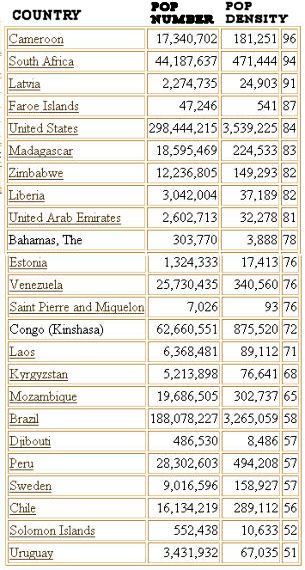
 Richard Laverack writes about the connections between the Spanish property development lobby and the shocking systemic corruption issues in Spain. There are many similarities between the Spanish and the Australian banking and property development lobbies and their relationships with government. The Ballieu Government's push for Westernport and a new "bubble" in Webb dock is based on the same philosophy of friendly fascism. So was the preceding Labor Government's. This article gives a short history of fascism and corruption in Spain before describing the current financial problems and their relationship with property and finance.
Richard Laverack writes about the connections between the Spanish property development lobby and the shocking systemic corruption issues in Spain. There are many similarities between the Spanish and the Australian banking and property development lobbies and their relationships with government. The Ballieu Government's push for Westernport and a new "bubble" in Webb dock is based on the same philosophy of friendly fascism. So was the preceding Labor Government's. This article gives a short history of fascism and corruption in Spain before describing the current financial problems and their relationship with property and finance.
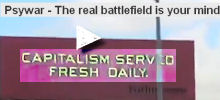 With her 1962 book, Silent Spring, Rachel Carson got DDT and other synthetic pesticides banned and saved bird life. Today it is humans who are directly threatened by technologies designed to extract the maximum profit at the lowest private cost and the maximum social cost from natural resources. Once abundant clean water has become a scarce resource. Yet, in the US ground water and surface water are being polluted and made unusable by mountain top removal mining, fracking and other such "new technologies. Ranchers in eastern Montana, for example, are being forced out of ranching by polluted water.
With her 1962 book, Silent Spring, Rachel Carson got DDT and other synthetic pesticides banned and saved bird life. Today it is humans who are directly threatened by technologies designed to extract the maximum profit at the lowest private cost and the maximum social cost from natural resources. Once abundant clean water has become a scarce resource. Yet, in the US ground water and surface water are being polluted and made unusable by mountain top removal mining, fracking and other such "new technologies. Ranchers in eastern Montana, for example, are being forced out of ranching by polluted water. http : / / www . youtube.com/watch?v=lZiAV6fU2NM&feature=player_embedded#!
http : / / www . youtube.com/watch?v=lZiAV6fU2NM&feature=player_embedded#!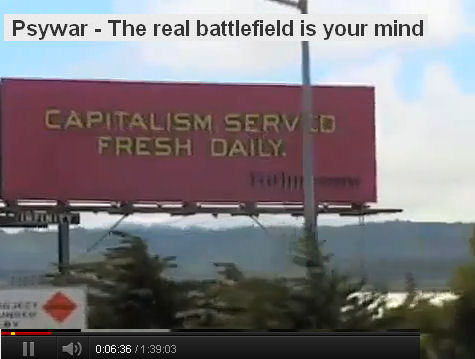 http : / / www . youtube.com/watch?v=lZiAV6fU2NM&feature=player_embedded#!
http : / / www . youtube.com/watch?v=lZiAV6fU2NM&feature=player_embedded#!
 The government needs to listen to the electorate. Consecutive public community polls have shown that Australians are very concerned about the ongoing rapid rate of population growth and density of development, food security, and social disorganisation in poorly serviced new suburbs.
The government needs to listen to the electorate. Consecutive public community polls have shown that Australians are very concerned about the ongoing rapid rate of population growth and density of development, food security, and social disorganisation in poorly serviced new suburbs.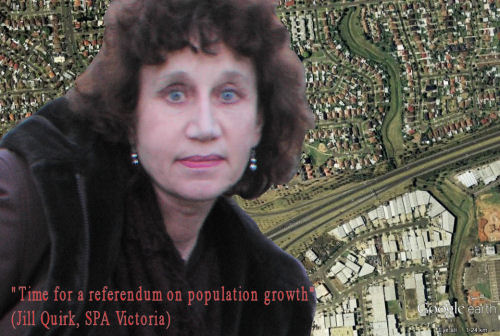
 Johnny and Joanie were once the typical post-apocalyptic Stone Age couple. Each day was a tribulation. Minding the kids, fending off predators and raiders from adjacent tribes, hell, just putting food on the table were stressful enough. The versatile Tim Murray reaches out to new-agers everywhere in this article about personal adjustment in a time of advanced oil-depletion.
Johnny and Joanie were once the typical post-apocalyptic Stone Age couple. Each day was a tribulation. Minding the kids, fending off predators and raiders from adjacent tribes, hell, just putting food on the table were stressful enough. The versatile Tim Murray reaches out to new-agers everywhere in this article about personal adjustment in a time of advanced oil-depletion. 

Recent comments